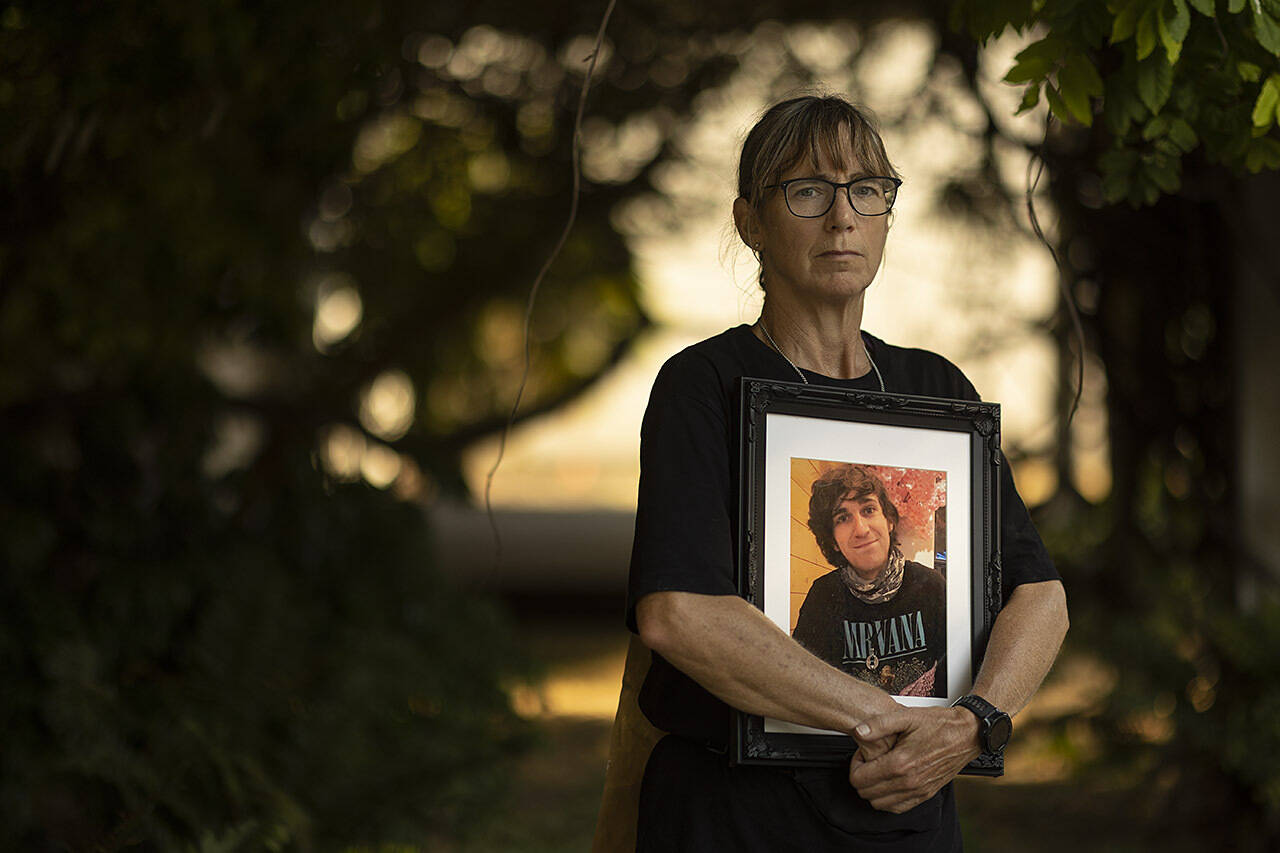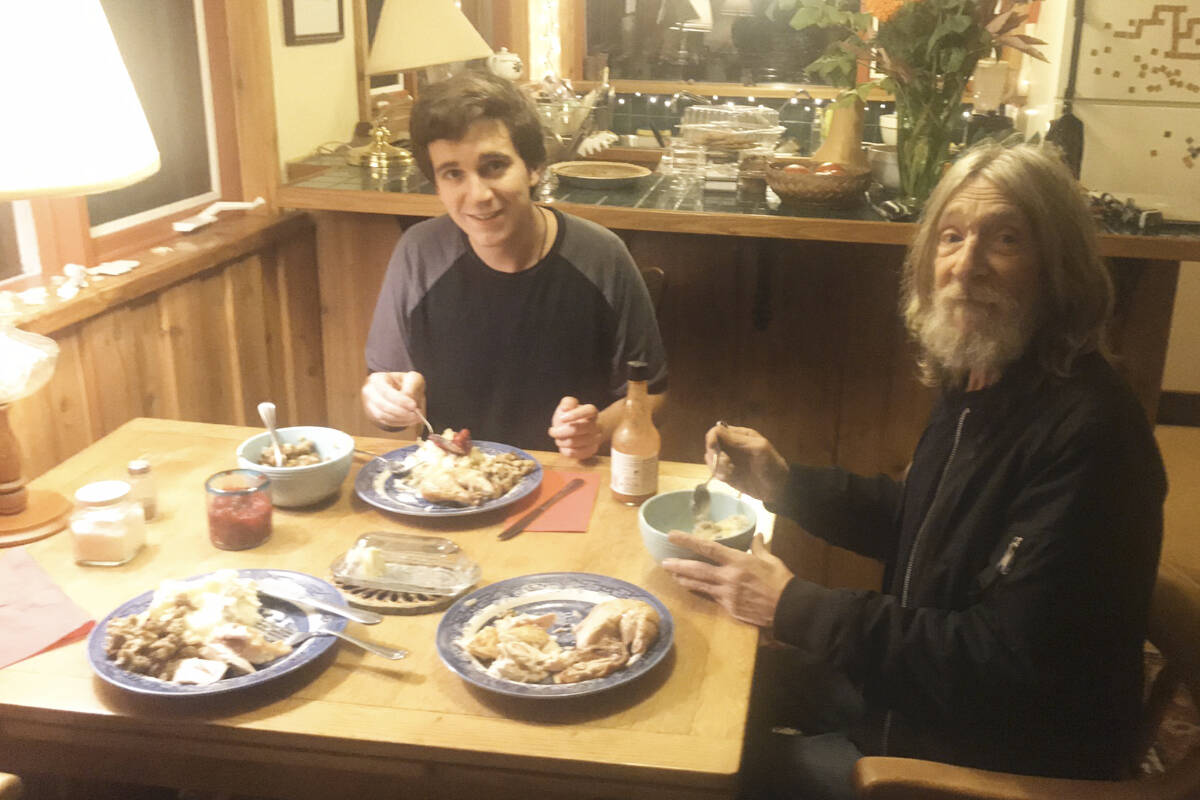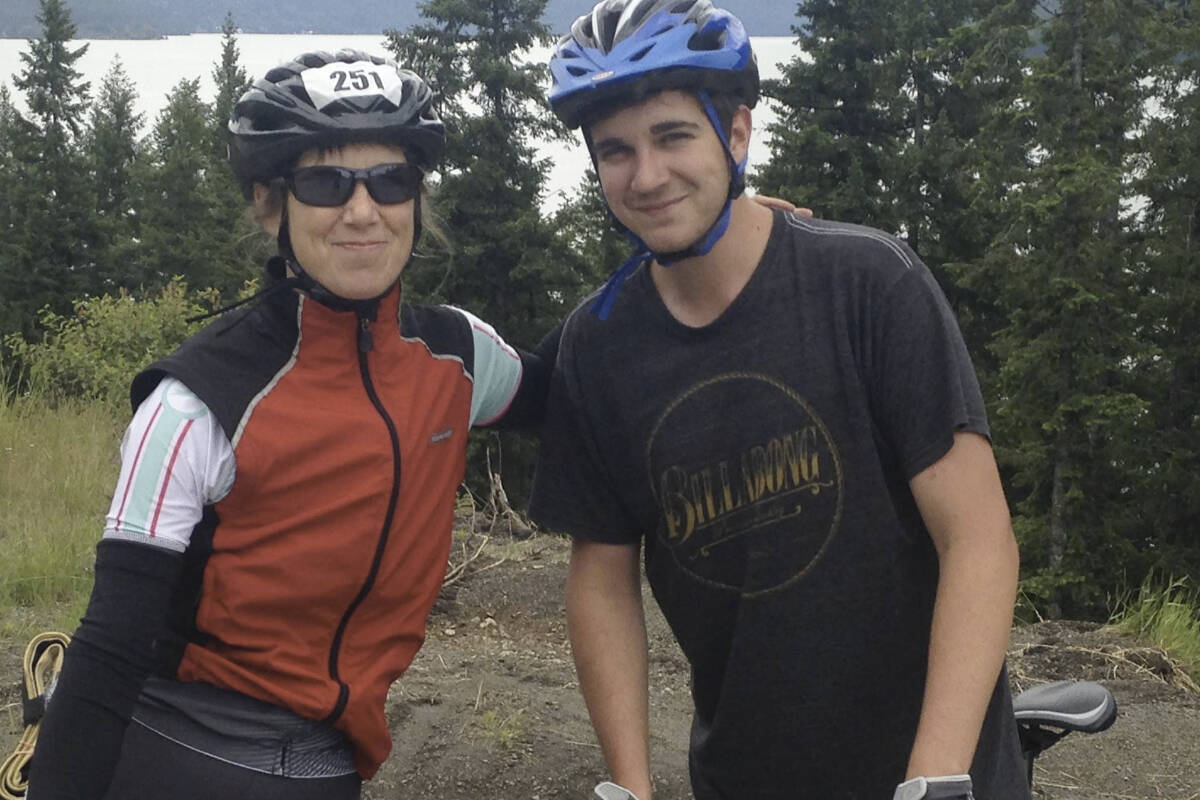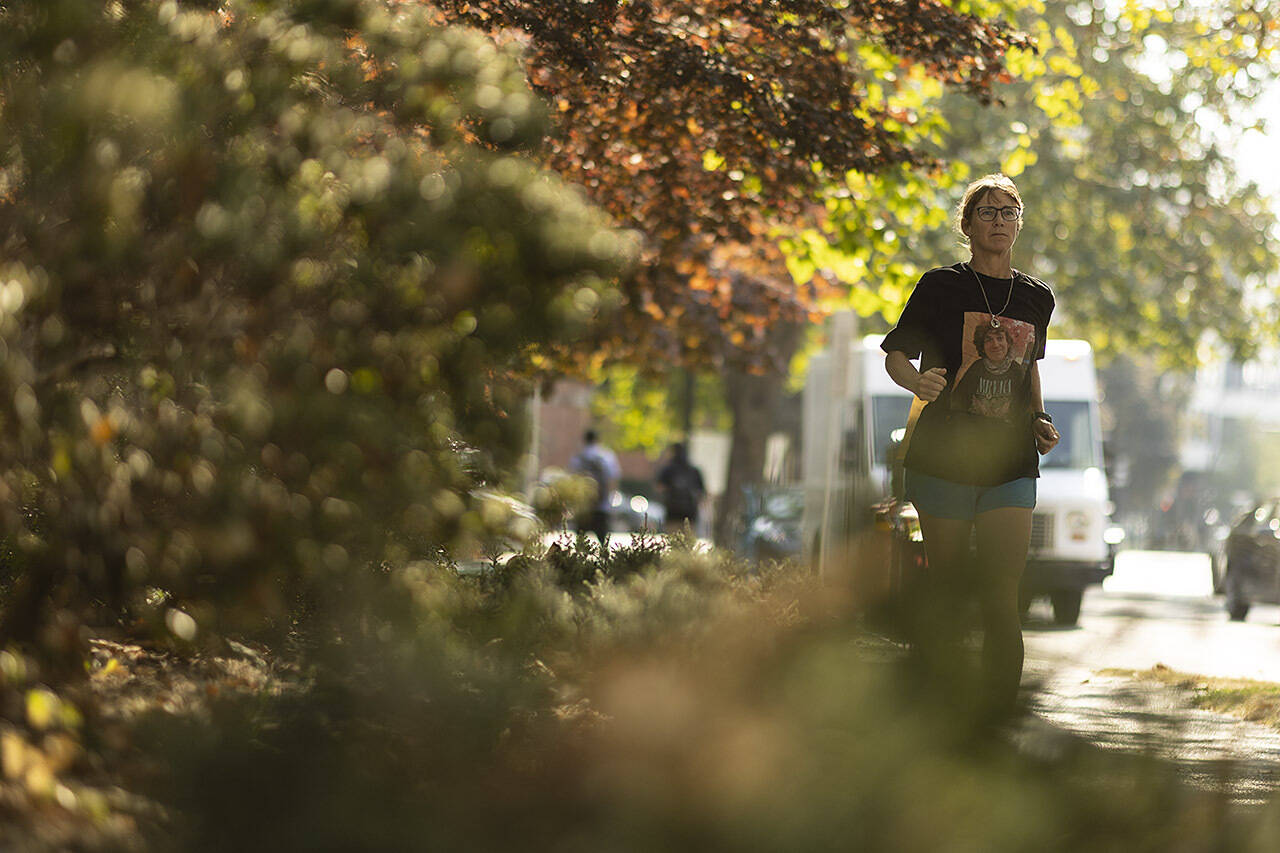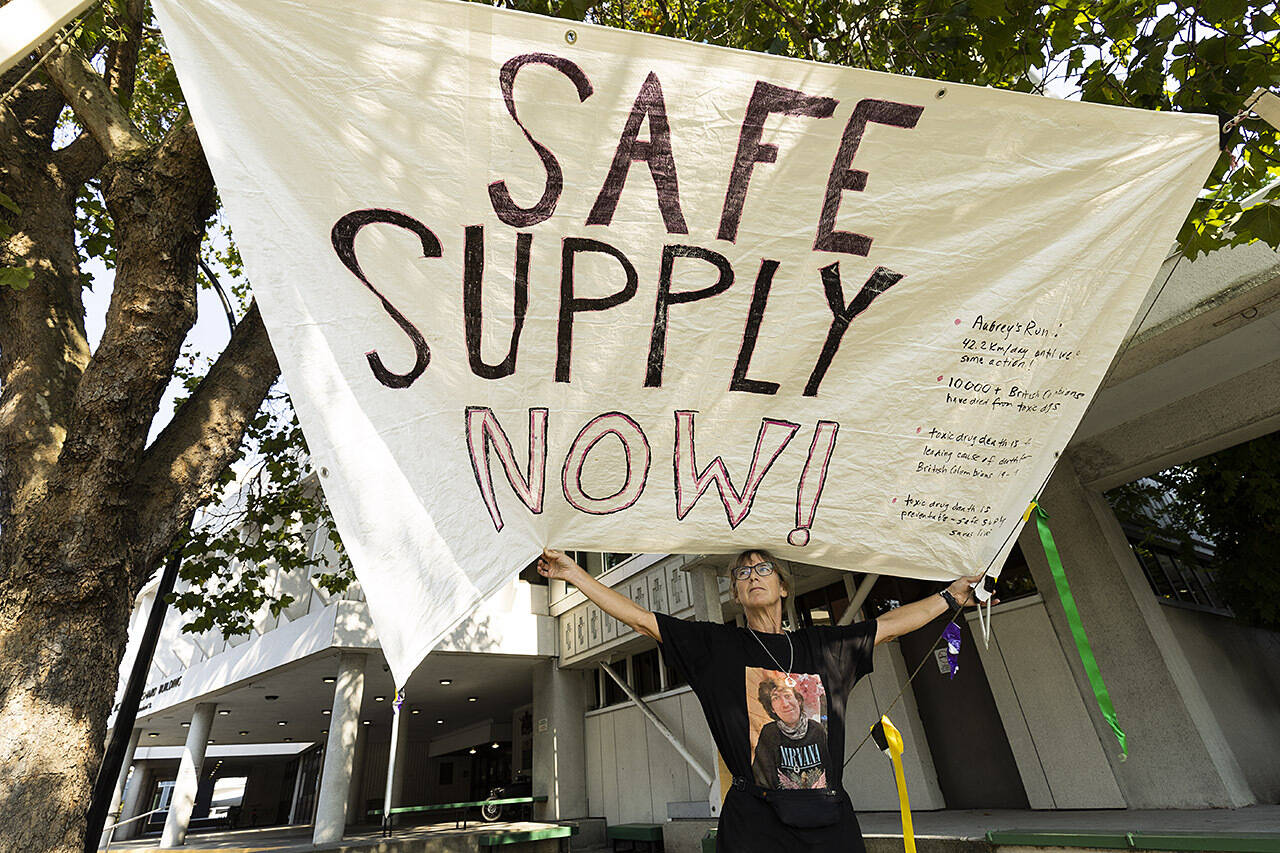On an October morning in Victoria, Jessica Michalofsky began to run.
She started at the corner of Blanshard Street and Pandora Avenue, under trees shading a sidewalk in front of the B.C. Ministry of Health’s main office. From there she ran the distance of two city blocks, or about 600 metres, back to where she started.
Then she did it again, over and over, until she had completed the marathon distance of 42.2 kilometres.
The next day she returned and again ran a marathon around the building. Loop after loop until her body ached and her feet cracked, Michalofsky hit her distance – only to start again the next day.
For seven days and nearly 300 kilometres, Michalofsky has run outside the health ministry office. No one at the ministry has approached her nor asked why she has chosen this route to run. If they did, they’d learn about her son, Aubrey Michalofsky. They’d know why grief, rage and determination are driving the 51-year-old teacher and triathlete to run until she feels heard.
“I was, and am, pretty lost,” she said in a phone interview from her Victoria home. “Aubrey was my only son and it’s pretty hard to imagine life now.”
Less than two months ago, Michalofsky was driving to the Nelson area to pick up Aubrey and his father, Rae Pryor. She had just finished an Ironman triathlon in Penticton, with plans to bring Aubrey and Rae to the coast for a vacation and celebrate their son’s upcoming 26th birthday.
Aubrey and Rae both lived in the small Kootenay community of Winlaw. When Michalofsky arrived at a small cafe in the town, only Pryor was there. She was told Aubrey was at a friend’s home in Beasley, on the outskirts of Nelson. So while Pryor stayed behind in case their son showed up, Michalofsky headed in her car to get her son.
There’s no cell service in Winlaw, so when she arrived in Beasley and realized she didn’t know the location of the house, she felt silly. Michalofsky continued into Nelson where she bought snacks and planned to sleep overnight in her car in a mall parking lot while she waited for Aubrey to call.
Just as she was settling down, her phone rang. It was Aubrey’s roommate. Her son had taken speed that was likely tainted with illicit fentanyl and had died, probably around the time Michalofsky was searching for him.
She put down the phone, got out of her car and began to scream.
Pryor was waiting at home for an update on their son’s location when Michalofsky called. He fell to the ground as she spoke.
”I was confident he was coming, and he couldn’t come,” Pryor recalls.
It was Aug. 30, the day before International Overdose Awareness Day. Aubrey was 25 years old, and is now among the 10,545 British Columbians who have died since the toxic drug crisis took grip on the province in 2016.
Effort to fight drug use met with barriers
Michalofsky wonders about the good her son could have accomplished if he’d survived.
Aubrey was enrolled in Selkirk College’s law and justice studies program and in 2021 earned a diploma, as well as several awards. He told his mother he was interested in joining a restorative justice program.
“It really pains me that Aubrey didn’t get to be that person.”
Aubrey had been a drug user since he was 17. The drugs strained his relationship with his mother, who asked him to move out but still tried to help her son. In 2016, when he was 18 or 19, they tried and failed to get him into a treatment centre. Aubrey later enrolled in a methadone program.
The provincial government has attempted to address the crisis by expanding addictions care services and opioid agonist treatments like methadone and suboxone, which are meant to provide a safe alternative to street drugs. Pilots are underway for access to legal heroine in the Lower Mainland, but an expansion is not imminent.
The approach has been criticized by harm-reduction advocates and user groups as ineffective and slow. The replacement drugs don’t substitute the high of fentanyl and are difficult to access – especially in rural communities.
Without a car, Aubrey struggled to get to Nelson to make appointments and pick up his allotted methadone. It gave him constipation, and Michalofsky said her son came to resent the doctor who demanded he be off other drugs and show up on time.
It was also impractical, she believes, for Aubrey to visit ANKORS in Nelson in order to check his drugs for contaminants like illicit fentanyl or carfentanil.
Aubrey left the methadone program five weeks before he died.
As she’s grieved, Michalofsky has come to her own conclusion about what might have saved her son: opioid agonist treatments should be delivered to users instead of expecting them to overcome transportation barriers for treatment.
The approach works for drug dealers, Michalofsky argues, so it should work in reverse.
But she also thinks those treatments fail because they don’t provide the euphoria users need and the government’s safe supply should include legal versions of street drugs, no different than alcohol.
It’s an idea that is catching on in B.C. by advocacy groups.
The Drug Users Liberation Front in Vancouver distributes small doses of tested heroin and cocaine, and the recently created Kootenay Insurrection for Safe Supply has followed suit in Nelson.
“Some people are going to overdose on fentanyl and heroin and alcohol anyway,” Michalofsky said. “But a lot of them are not going to, and a lot of those people, once we’re connected with them, we can be offering treatment. We can be offering wellness checks. I think that’s a much more humane model.”
Michalofsky’s grief soon turned into a search for answers. Her son, she decided, should still be alive. His death, and thousands of others before him, was preventable if only leaders would consider new solutions.
Michalofsky has a history of civil disobedience. In 1993, she was one of hundreds arrested for protesting clearcutting in Clayoquot Sound, so at first it made sense to be disruptive again.
On Sept. 28 she climbed a street light near the health ministry building and hung a sign that read “Toxic Drug Deaths Are Preventable.”
But the strain of staying up on the light caused her to pass out. Police and first responders were sympathetic upon rescuing her, which left her feeling guilty that they could have been helping others in need.
The next week she returned with a pair of running shoes on.
Marathon runners typically need weeks of recovering before attempting the distance again. Aside from a pause for Thanksgiving weekend, Michalofsky has taken no breaks. She doesn’t always run the entire distance, but over about seven hours each day she completes it no matter what state her body is in.
Her run will go on, often painfully, until Health Minister Adrian Dix hears what she has to say.
‘He really tried hard to be safe’
The day of Aubrey’s death haunts Michalofsky.
She wonders if she might have saved her son by banging on doors in Beasley. He had been unconscious for hours but mistaken for sleeping. Paramedics tried for an hour to resuscitate him once they were called.
Aubrey had packed for the family’s trip before he died. Among the usuals, like a toothbrush and contact lenses, were several other personal possessions: A glow-in-the-dark moon cup gifted by his mom one Christmas, shells and crystals he’d collected on trips and a flash drive of family images that included his grandparents’ 1947 wedding photos.
Michalofsky also found a naloxone kit tucked into his bag, with six unused syringes – any one of which might have saved his life.
“Aubrey really tried hard. He really tried hard to be safe with his drug use, and there’s just no way he could have been.”
At home in Victoria, she’s surrounded by her son: childhood shoes, school reports, family photos. Running has begun to feel like an escape from the pieces of Aubrey she just can’t throw away.
As she runs around the health ministry, Michalofsky has begun carrying naloxone with her. She’s often checking on people passed out, usually just pausing to make sure they are able to acknowledge her before returning later for another chat.
Friends and strangers have also begun to help with the runs. A Victoria running store donated a new pair of shoes, and a local taco restaurant allows her to use its washroom. Fellow triathletes visit to run laps. Others are stepping in to run her social media account and help with outreach.
Pryor and Michalofsky separated when Aubrey was young but remained close. He wants to support her but is concerned she will get hurt.
“I think it’s extremely noble but I worry about her a lot. I see her on video and she’s limping and in pain.”
Michalofsky is running through the pain, knowing that the warm fall weather in B.C. will soon become cold and wet. Her spirit may not break down, but her body will. Her grief won’t go away, but it will numb with time.
For now, though, Michalofsky plans to keep running. If she stops, who will run in her place?
READ MORE:
• ‘This is an emergency’: Small group of Nelson residents honour lives lost from toxic drug crisis
• Thousands in B.C. will continue to die until there is a safe drug supply, say advocates
• 169 British Columbians killed from toxic drug supply in August: Coroner
@tyler_harper | tyler.harper@nelsonstar.com
Like us on Facebook and follow us on Twitter.
